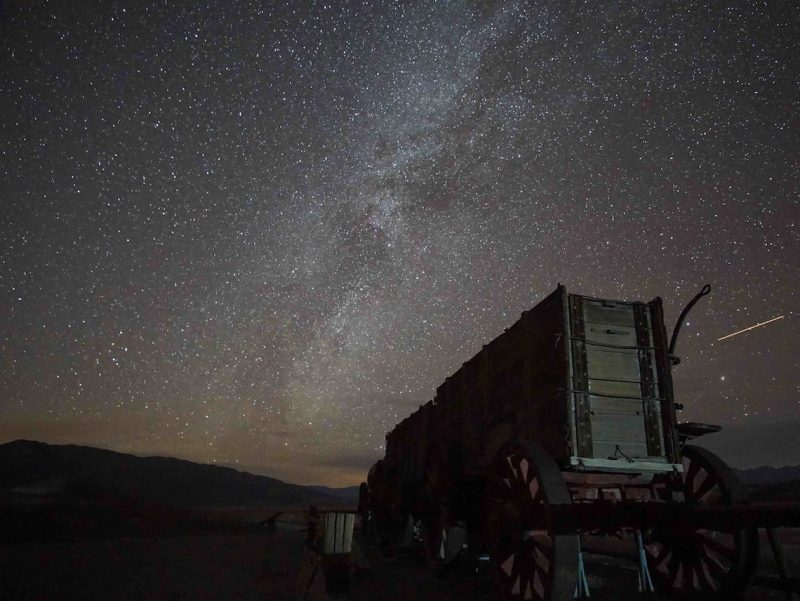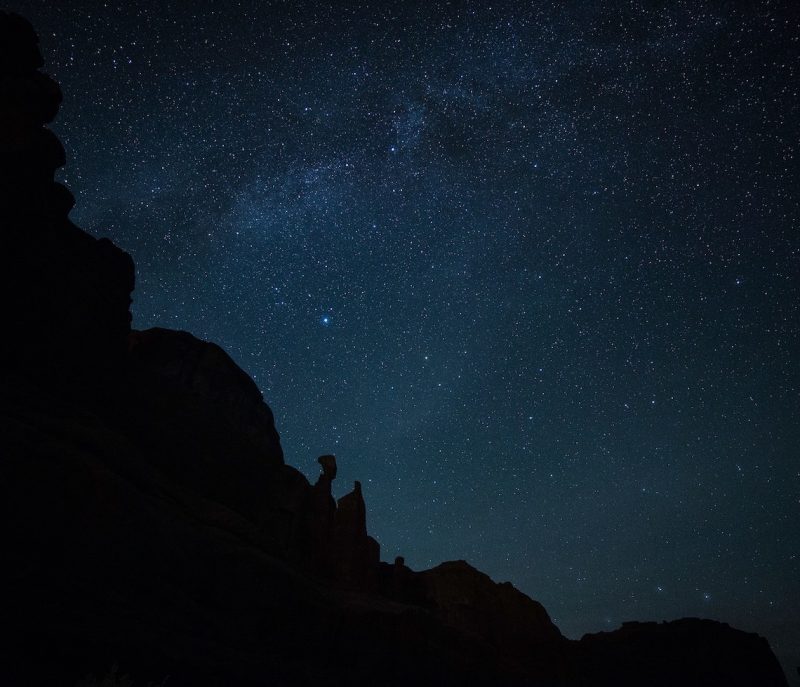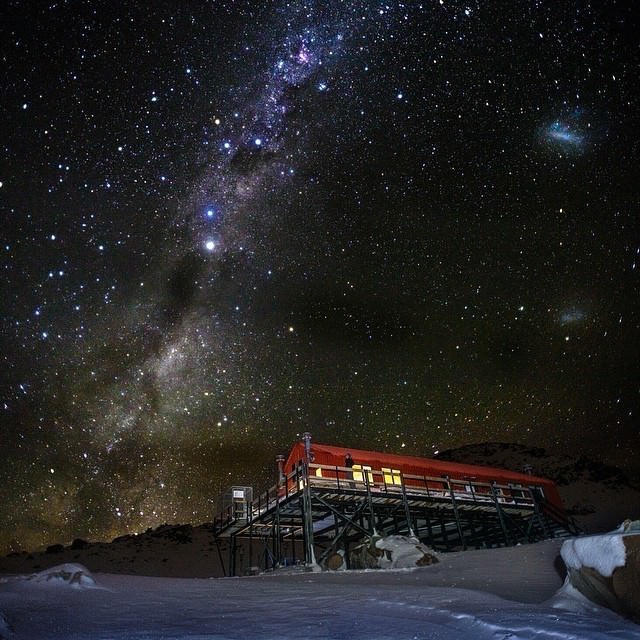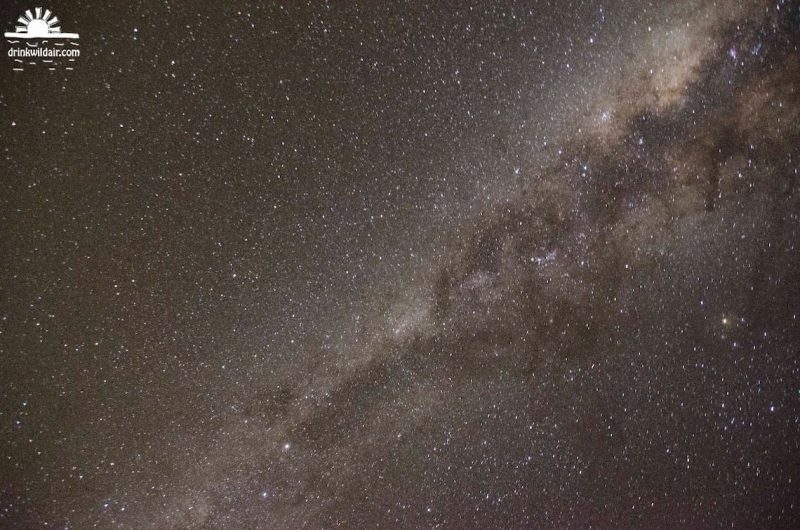
We can all look up and appreciate an exceptionally bright moon or a surprisingly clear night. But sadly, the increase in worldwide light pollution makes it more difficult to see the stars, the moon, planets and deep-sky objects like galaxies and globular clusters. To help combat this issue, Trover, a travel photography platform, has joined together with astronomy expert and journalist Jamie Carter, to find 10 amazing year-round stargazing spots for a definitive stargazing travel bucket list – along with some astrophotography tips too.
1. Joshua Tree National Park, California, U.S.
Fancy a selfie with the stars? It’s become fashionable among astrophotographers to set up a shot and then go stand in it. If you want to give it go, get yourself down to White Tank Campground at the northern end of Joshua Tree National Park, a huge wilderness in southern California beloved of astrophotographers and stargazers.
Joshua Tree National Park’s darkness is extra-precious. The last pool of natural darkness in southern California, it’s now an International Dark Sky Park. That should help protect it for the populations of Los Angeles and San Diego, for which Joshua Tree is the nearest practical place to experience darkness. White Tank Campground and Cottonwood Campground have the darkest skies here.

2. Acadia National Park, Maine, U.S.
September is probably the best month of the year at Acadia for stargazing and astrophotography (which is the photography of astronomical and celestial objects in the night sky). Not only is it warm enough to stand around in short sleeves and look at the stars, but the Milky Way is also visible soon after sunset.
The planets are visible at different times depending on the year, but views like this of the Milky Way can be enjoyed every summer and early autumn. It’s no surprise then that every September the region hosts the Acadia Night Sky Festival. Held throughout Acadia National Park, Bar Harbor, Mount Desert Island and the Schoodic Peninsula, it includes activities and events ranging from expert talks on asteroids and the Milky Way to a boat cruise that teaches guests how to navigate using only the constellations.
Experience for yourself: If you’re after true and total darkness, take a mailboat to Acadia National Park’s Duck Harbor Campground on Isle au Haut, which has five primitive campsites. It’s also a nice place to hike.
Visit EarthSky’s Best Places to Stargaze page for dark locations near you

3. Saguaro National Park, Arizona, U.S.
Astrophotography is not just about photographing the stars – photographs containing only stars are typically not very interesting. The perfect nightscape photo is one that also includes a strong foreground. Cue Saguaro National Park. Close to Tucson, Arizona, it’s home to the saguaro, the largest species of cactus in the U.S.
Finding something to put in the foreground of your astro-image doesn’t get any easier than this, though what you choose to put behind the saguaros will depend on what’s visible when you’re there.
Note the park’s hours: According to this webpage, the Tucson Mountain District (west), the park is open to vehicles from sunrise to sunset daily. (Actual times vary throughout the year). The Rincon Mountain District (east), the park is open to vehicles from 7 a.m. (if staffing permits, gates may open earlier) to sunset daily. You can walk or bike into the park 24 hours a day.
Experience for yourself: Come at dusk the day before or on February 9, March 9 and April 8, 2020, and you can capture a fabulous supermoon, appearing between the tall cactuses in the eastern sky.
[Editor’s Note: Supermoons don’t look larger than other full moons, but they do look brighter! Try capturing your photo at dusk, when the moon will be ascending in the eastern sky. At dusk, the contrast between the bright moon and black night sky is less than later at night; it makes for a better photo. For exact sunset/moonrise times, try this custom calendar.]

4. Mount Rainier National Park, Washington, U.S.
The active volcano that dominates Mount Rainier National Park can get another kind of green glow during the winter months, too. Although its latitude of 47° N puts it far from the Arctic Circle – where the aurora borealis usually hangs out – during extra-strong displays the “green lady” can move south and sometimes be glimpsed on the northern horizon from here.
Experience for yourself: A great observing spot at Mount Rainier National Park is Sunrise Point. The highest point in the park, it’s reachable by car at 6,400 feet (1,950 meters).

5. Cherry Springs State Park, Pennsylvania, U.S.
Talk to any astrophotographer in or around New England about where they go to shoot the stars, and they’ll all say the same thing: Cherry Springs State Park in north-central Pennsylvania.
Just a few hours’ drive from massive population centers like Boston, New York City and Washington, D.C., and yet surrounded by the largely undeveloped Susquehannock State Forest, Cherry Springs can get really busy from about April (which is when the above image of the Milky Way was shot).
Experience for yourself: It’s popular at this time of the year because of its incredible dark sky conditions and facilities for stargazers, astronomers and astrophotographers. The draw is its Overnight Astronomy Observation Field. Perched at the top of a 2,300 feet (700 meters) high mountain, it offers a 360-degree view of the night sky for those who register in advance. It also regularly hosts star parties. Nearby you’ll find the Cherry Springs campground and another separate night sky viewing area.
Cherry Springs is also a “gold tier” International Dark Sky Park, a designation from the International Dark Sky Association of only the very darkest locations in the world.

6. Death Valley National Park, California, U.S.
Harmony Borax Works at Furnace Creek in Death Valley National Park is something of a favorite among astrophotographers – and it’s easy to see why from the photo above, taken before sunrise on an April morning. Once again it shows why composition is so important in creating a great nightscape photo.
Experience for yourself: Death Valley National Park is the perfect location. There are dozens of minor celestial “storms” throughout the year, but the big meteor showers to look out for are the Delta Aquariids (late July through early August), the Perseids (August 11-13), Orionids (October 21–22 2019), Taurids (November 5–6, 2019), Leonids (November 17–18 2019), but especially the Geminids (December 13–14 2019). The “king of the meteor showers,” the Geminids can produce up to 120 marvelous multicolored meteors per hour.
Click here for EarthSky’s meteor shower guide

7. Arches National Park, Utah, U.S.
Utah has an embarrassment of riches for anyone who wants to look up at a night sky. With vast national parks like Canyonlands National Park, Natural Bridges National Monument, and Hovenweep National Monument, and a super-low population density, this dry, arid area is a cosmic playground.
None more so than Arches National Park, which in July 2019 was at last given the status of an International Dark Sky Park. The park rangers here have been committed to teaching about its precious dark skies for years.
Arches has – you guessed it – dozens of delicate weather-eroded rock arches that can act as an unlikely frame for stars, planets and the Milky Way. You’ll find all the rock formations you want within walking distance of the Devil’s Garden Campground.
Visit EarthSky’s Best Places to Stargaze page for dark locations near you

8. Karijini National Park, Western Australia
The Southern Hemisphere has a different perspective on the universe around us and so a different view of the night sky, including some sights that those in the Northern Hemisphere never see. In the above image, you can see a great example of that: the Milky Way’s bright core. You have to be in the Southern Hemisphere to see our own galaxy’s center at its brightest. It’s best viewed from a remote dark sky destination like Karijini National Park in Western Australia between April and November.
Stand outside on a clear night and there are so many stars that it’s easy to see why aboriginal culture doesn’t bother with describing stars and constellations, but rather sees only the gaps between them. The most famous is the Emu, a dark shape stretching from the Southern Cross along the Milky Way’s Great Rift of overlapping dust clouds obscuring the stars.

9. Aoraki/Mount Cook National Park, New Zealand
One of the most beautiful hikes in all of New Zealand, the Mueller Hut Track also gives some terrific panoramic views of Aoraki/Mount Cook National Park – and the night sky above, of course. This image is the perfect example of why every stargazer, astronomer and astrophotographer must venture to the Southern Hemisphere at some point.
Yes, the Milky Way is brighter, but focus your gaze on the right-hand side of the above image. You’ll see two objects that are impossible to see from north of the equator: the Large Magellanic Cloud and the Small Magellanic Cloud. Dwarf galaxies orbiting the Milky Way, they each contain billions of stars, and their appearance in night sky photographs are a hallmark of an adventurous sky-watcher.
Experience for yourself: The Large Magellanic Cloud and the Small Magellanic Cloud are best seen between December and April from New Zealand, Australia, southern Africa and South America.

10. Atacama Desert, Chile
Why do stars twinkle? Technically they don’t, but the closer you are to sea-level, the more air you are stargazing through – which distorts everything and makes stars look like they’re twinkling.
There is an easy way to get above all that air – go to the Atacama Desert in northern Chile. Here, in one of the driest, highest and clearest skies in the world is the small town of San Pedro de Atacama. A stargazing mecca on an arid high plateau at over 6,500 feet (2,000 meters), it’s close to some boutique observatory-hotels, including Alto, Explora Atacama and Observatorio Alarkapin.
It’s normally not recommended to go anywhere famed for its dark skies – such as the Atacama Desert – while there’s a full moon. Why? Well, the full moon is the biggest light-polluter of all, so the bigger and brighter it is, the fainter the stars will appear. However, there is one exception and that’s during a total lunar eclipse.
Bottom line: Ten great dark-sky places – mostly in the U.S. but also in Australia, New Zealand and Chile – for skywatching and stargazing.
Via Jamie Carter/Trover.











